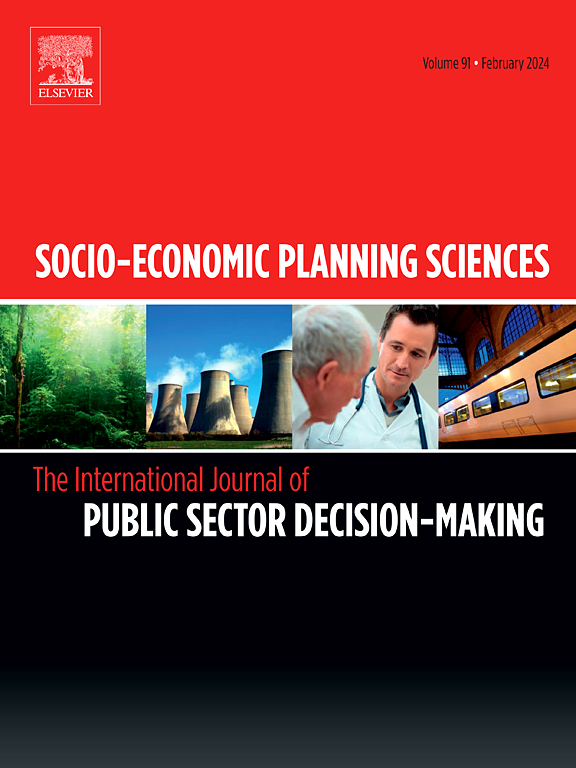Wind of change for agent decisions and innovation diffusion: The ASPID predictive model for technology adoption
IF 5.4
2区 经济学
Q1 ECONOMICS
引用次数: 0
Abstract
Innovations are part of human evolution and are essential for survival. However, traditional innovation diffusion models do not contemplate the possibility of innovation failure and focus on imitation social processes that require historical data for their estimation, providing only ex-post information, which limits their usefulness for risk management operations. This paper proposes a more general new model (ASPID: AbS-based Predictive Innovation Diffusion model) focusing on the decisions of agents who exhibit intentional limited rationality (IBR). ASPID provides: i) a greater depth of ex-post analysis than the classical models; ii) ex-ante information on the innovation diffusion process based on the characteristics of the target agents, the quality of the innovation, and the network topology of their relationships; iii) the success probability since innovations can fail. The model's versatility allows it to adapt to any information level, from the most aggregated to the most detailed. Some ex-ante and ex-post examples are presented to support the contribution.
主体决策与创新扩散的变革之风:技术采用的ASPID预测模型
创新是人类进化的一部分,对生存至关重要。然而,传统的创新扩散模型没有考虑创新失败的可能性,而是关注需要历史数据进行估计的模仿社会过程,仅提供事后信息,这限制了其对风险管理操作的有用性。本文提出了一个更通用的预测创新扩散模型(ASPID: AbS-based Predictive Innovation Diffusion model),该模型主要关注表现出有意有限理性(IBR)的主体的决策。ASPID提供:i)比经典模型更深入的事后分析;Ii)基于目标主体特征、创新质量及其关系网络拓扑的创新扩散过程事前信息;Iii)由于创新可能失败,因此成功的概率。该模型的多功能性使其能够适应任何信息级别,从最聚合的到最详细的。给出了一些事前和事后的例子来支持这一贡献。
本文章由计算机程序翻译,如有差异,请以英文原文为准。
求助全文
约1分钟内获得全文
求助全文
来源期刊

Socio-economic Planning Sciences
OPERATIONS RESEARCH & MANAGEMENT SCIENCE-
CiteScore
9.40
自引率
13.10%
发文量
294
审稿时长
58 days
期刊介绍:
Studies directed toward the more effective utilization of existing resources, e.g. mathematical programming models of health care delivery systems with relevance to more effective program design; systems analysis of fire outbreaks and its relevance to the location of fire stations; statistical analysis of the efficiency of a developing country economy or industry.
Studies relating to the interaction of various segments of society and technology, e.g. the effects of government health policies on the utilization and design of hospital facilities; the relationship between housing density and the demands on public transportation or other service facilities: patterns and implications of urban development and air or water pollution.
Studies devoted to the anticipations of and response to future needs for social, health and other human services, e.g. the relationship between industrial growth and the development of educational resources in affected areas; investigation of future demands for material and child health resources in a developing country; design of effective recycling in an urban setting.
 求助内容:
求助内容: 应助结果提醒方式:
应助结果提醒方式:


